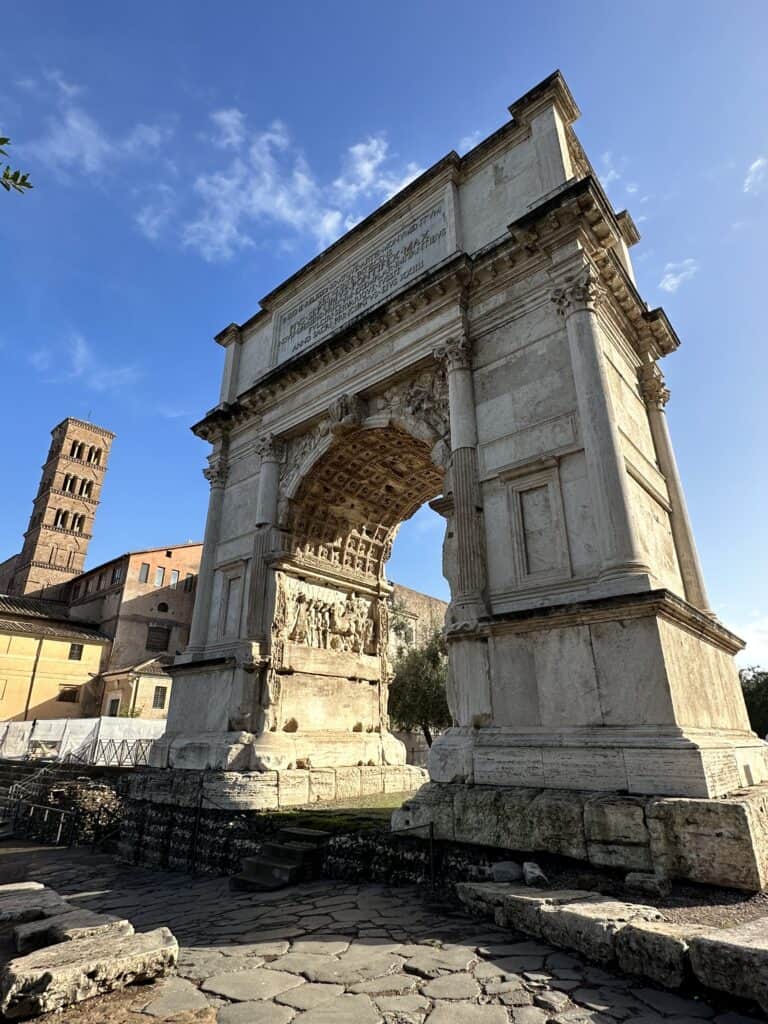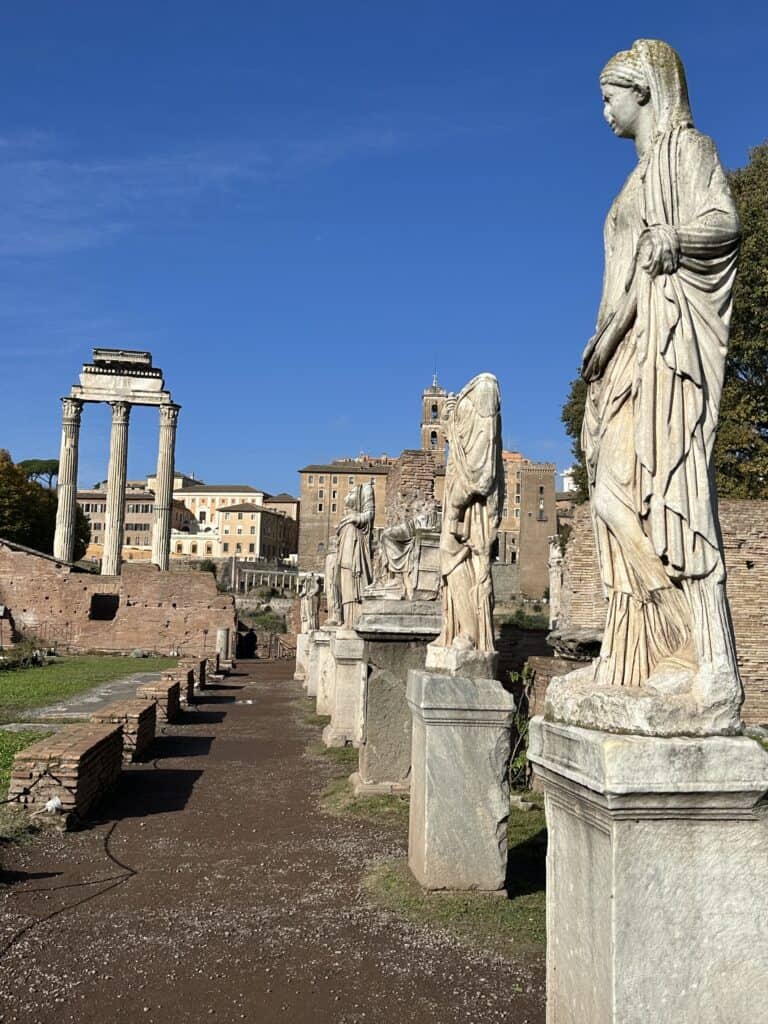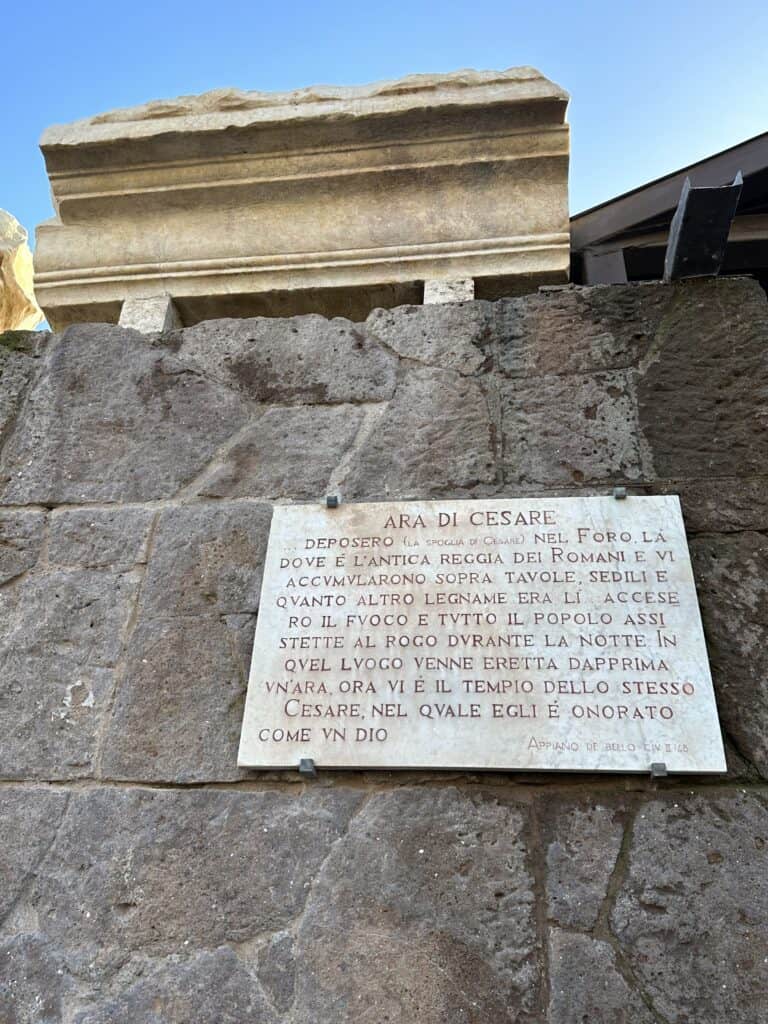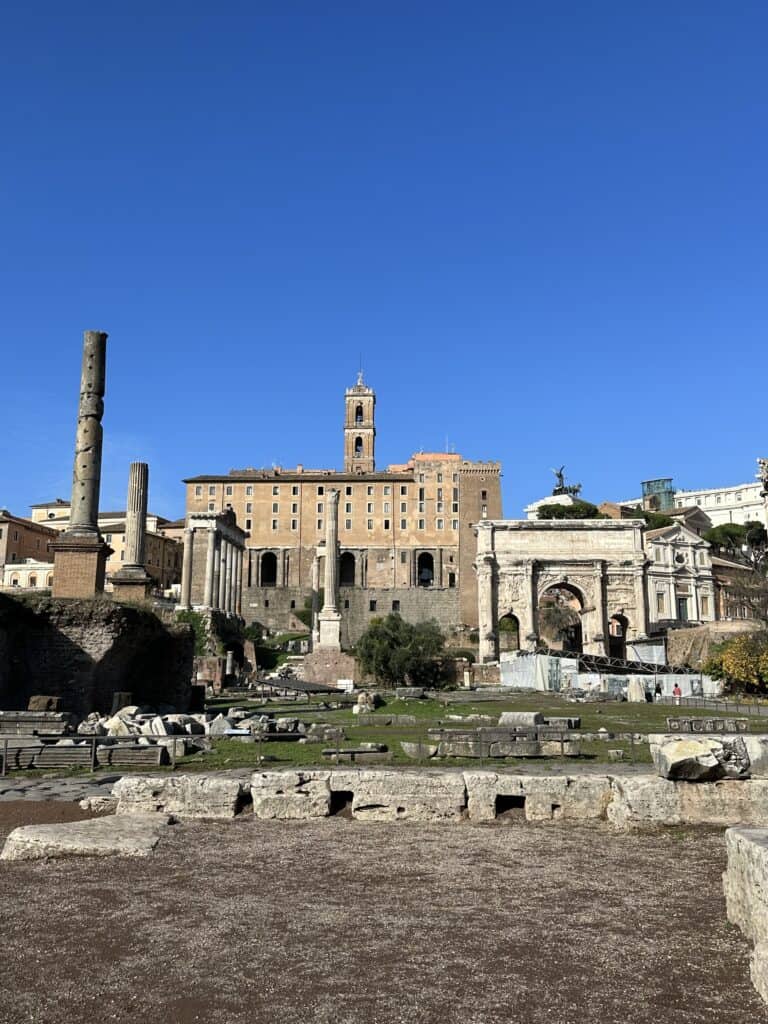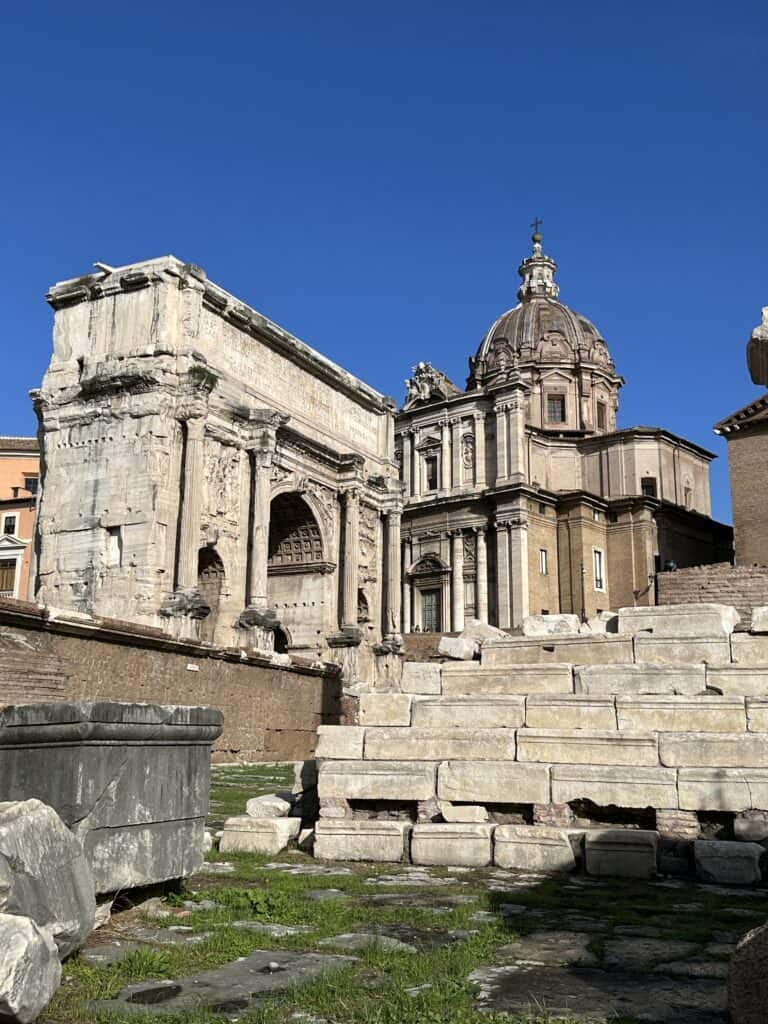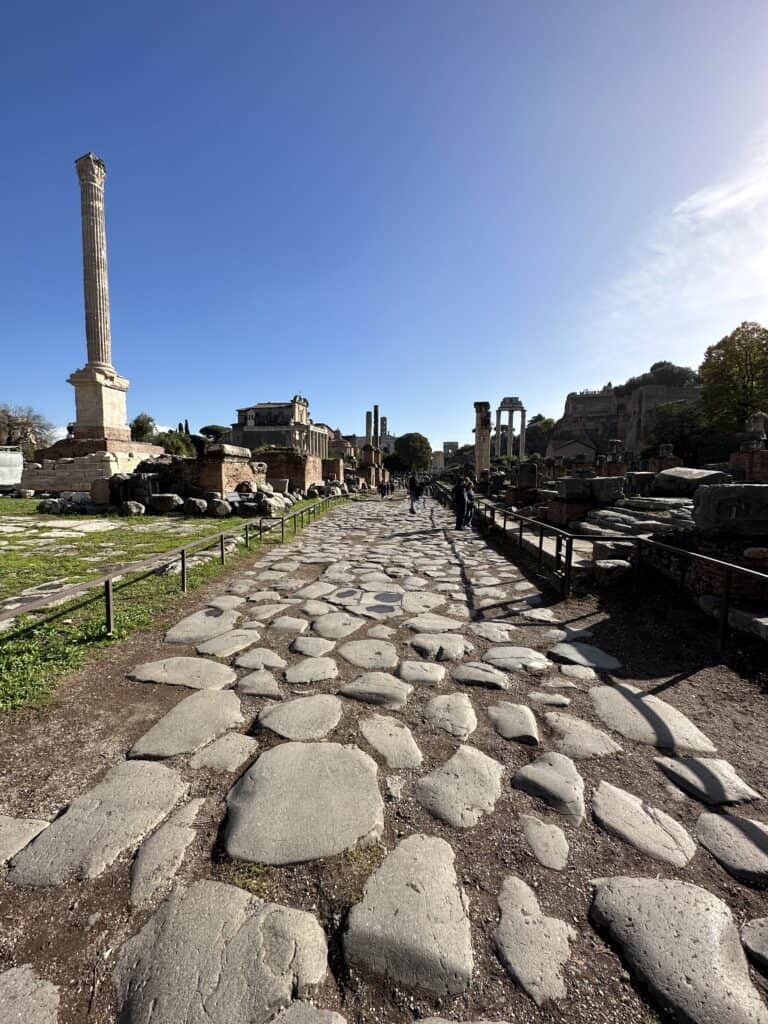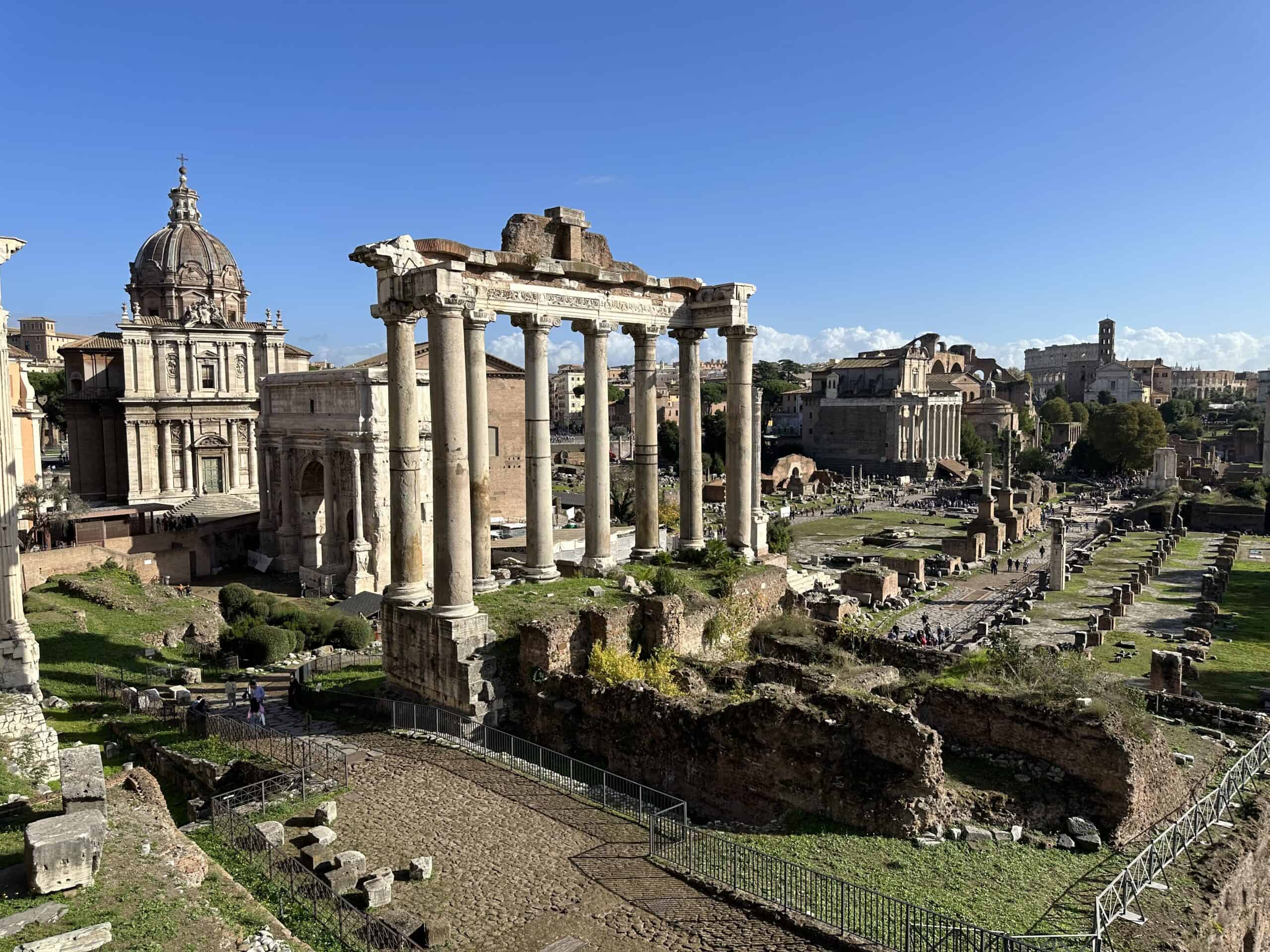
The Imperial Fora were a series of monumental squares adjacent to the Roman Forum, built during the first century by Julius Caesar and by the emperors Augustus, Trajan and Nerva.
The remains of the Imperial Fora today are crossed by the road that takes its name, “Via dei Fori Imperiali”.
They are the main archaeological area of Rome, collecting a good part of the history of ancient Rome and for centuries represented the political, economic, legal and religious center of Rome and its Empire, as well as the strategic and nerve center of Roman civilization.
The valley where the Forums rise was a marshy area, mainly used between the 10th and 7th centuries BC as a necropolis for the first villages of residents of the surrounding hills. Only around 600 BC the area was recovered and reclaimed thanks to the Etruscan King Tarquinio Prisco, who built the tuff pavement of the main rectangular square created at the point where the main roads converged and which later became the heart of Roman life for over a millennium.
After the birth of the Republic many important sanctuaries were erected such as the temple of Saturn, the temple of the Dioscuri and the Lacus Curtius.
Between 46 AD and 200 AD the Forums were enlarged with the construction of the two large basilicas Emilia and Giulia, the Arch of Augustus, the Temple of Vespasian, the Arch of Titus, the Temple of Antoninus and Faustina and the Temple of Venus and Rome built by the Emperor Hadrian on the remains of the Domus Aurea.
After the fall of the Roman Empire, the area of the Forum went through a long phase of decline with various looting, spoliation and changes of use until it was almost completely buried in the 16th century.
The conservation of some main temples is because they were transformed into churches allowing their conservation over time while many buildings were completely removed during the Renaissance when the area was used as a stone and marble quarry.

